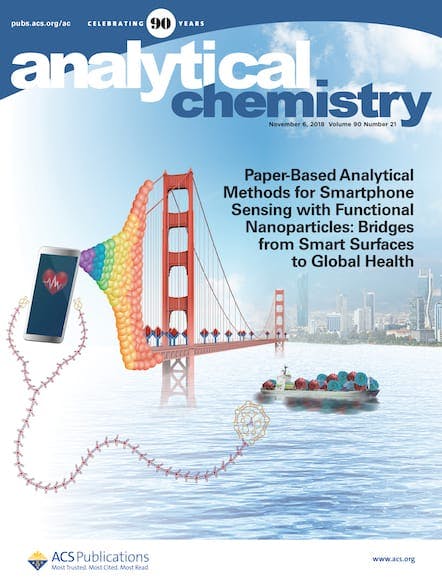Chemists have pulled back the veil on suspected ancient silk forgeries by revealing telltale chemical traces in the fabric. They show that amino acid analysis can tell real ancient silk from fake, and their analysis method reveals the manner of deception: Amino acid measurements from forged silks match modern silks that have been soaked in […]

Chemists have pulled back the veil on suspected ancient silk forgeries by revealing telltale chemical traces in the fabric. They show that amino acid analysis can tell real ancient silk from fake, and their analysis method reveals the manner of deception: Amino acid measurements from forged silks match modern silks that have been soaked in hot base to artificially age them.
In 1924, archaeologists unearthed a small number of rare Persian silks from the Buyid period (A.D. 934-1062) at the burial site of the princess Bibi Shahrbanu in Iran. The silks quickly found their way to museums and private collections in the U.S. and Europe. Shortly afterward, in the 1930s, pieces of silk in over 50 additional designs appeared on the antiquities market, ostensibly from the same time period. After many museums and collections had acquired “Buyid silks,” curators and experts started to cast doubt on the authenticity of many of them. Careful study of weave patterns and design bolstered the suspicions—and, decades later, carbon-14 dating proved that at least some of the Buyid silks sold after 1930 are forgeries.
The George Washington University Museum and The Textile Museum hold some of the questionable silk specimens that have not been 14C dated. Mehdi Moini, a chemist in George Washington University’s department of forensic sciences, gained access to the ancient silk fabrics to try out a dating test developed in his laboratory that requires far less sample and is less expensive than 14C dating. He was given threads from 12 Buyid silks of questionable origin, as well as threads from one 14C-dated authentic Buyid silk.
Moini’s test analyzes the amino acids in silk. As proteins age, some of their amino acids change shape. They racemize or switch from far more common left-handed shapes (L) to right-handed shapes (D): It’s the same mechanism that contributes to cataracts—cloudy zones of protein—in the eyes of aging humans. Aspartic acid is the amino acid most prone to this process, so in 2011, Moini used capillary electrophoresis mass spectrometry to separate the D and L forms. They showed that the higher the ratio of D- to L-aspartic acid in silk proteins, the older the silk sample. In a 2,500-year-old silk, for example, the ratio is close to 45%.
The Buyid period was around 1,000 years ago, so in authentic samples Moini expects to see aspartic acid D/L ratios around 30%. The 14C-dated authentic Buyid silk had a ratio of 29.6%. Yet the ratio of 11 of the 12 dubious silks ranged unexpectedly widely, from 32.5% to 51.8%, which would mean the age of the silks ranged from about 1,200 years old to past the end of Moini’s calibration curve at 2,500 years old, which is unreasonably old. Moini also found abnormally high phenylalanine and tyrosine D/L ratios in most of the possible forgeries. These amino acids racemize slowly enough that in naturally aged 1,000-year-old silks, D-phenylalanine and -tyrosine are almost undetectable.
Moini suspected he had found biomarkers of an artificial aging technique. So his graduate student, Christopher Rollman, took modern silks and tried to age them by heating them, shining light on them, or exposing them to a base at high temperatures, also called degumming, which is used industrially to make silk shiny. The degumming technique, it turned out, results in spiked D-aspartic acid, D-phenylalanine, and D-tyrosine. “We can reproduce the signatures exactly,” Moini says. Eleven of the 12 dubious silks showed high levels of D-aspartic acid, D-phenylalanine, and D-tyrosine, strongly indicating that they are forgeries. One silk did not have high D-phenylalanine and D-tyrosine and did not appear to be artificially aged, although the D-aspartic acid levels showed that it was not as old as the Buyid period.
“In my opinion, the paper is conclusive,” says Ernst Kenndler of the University of Vienna. High levels of right-handed forms of aspartic acid, phenylalanine, and tyrosine together serve as an indicator of artificial aging of silk. He adds that although the method works well on a protein-based fabric like silk, it wouldn’t work on cotton or other fabrics based on polysaccharides.
